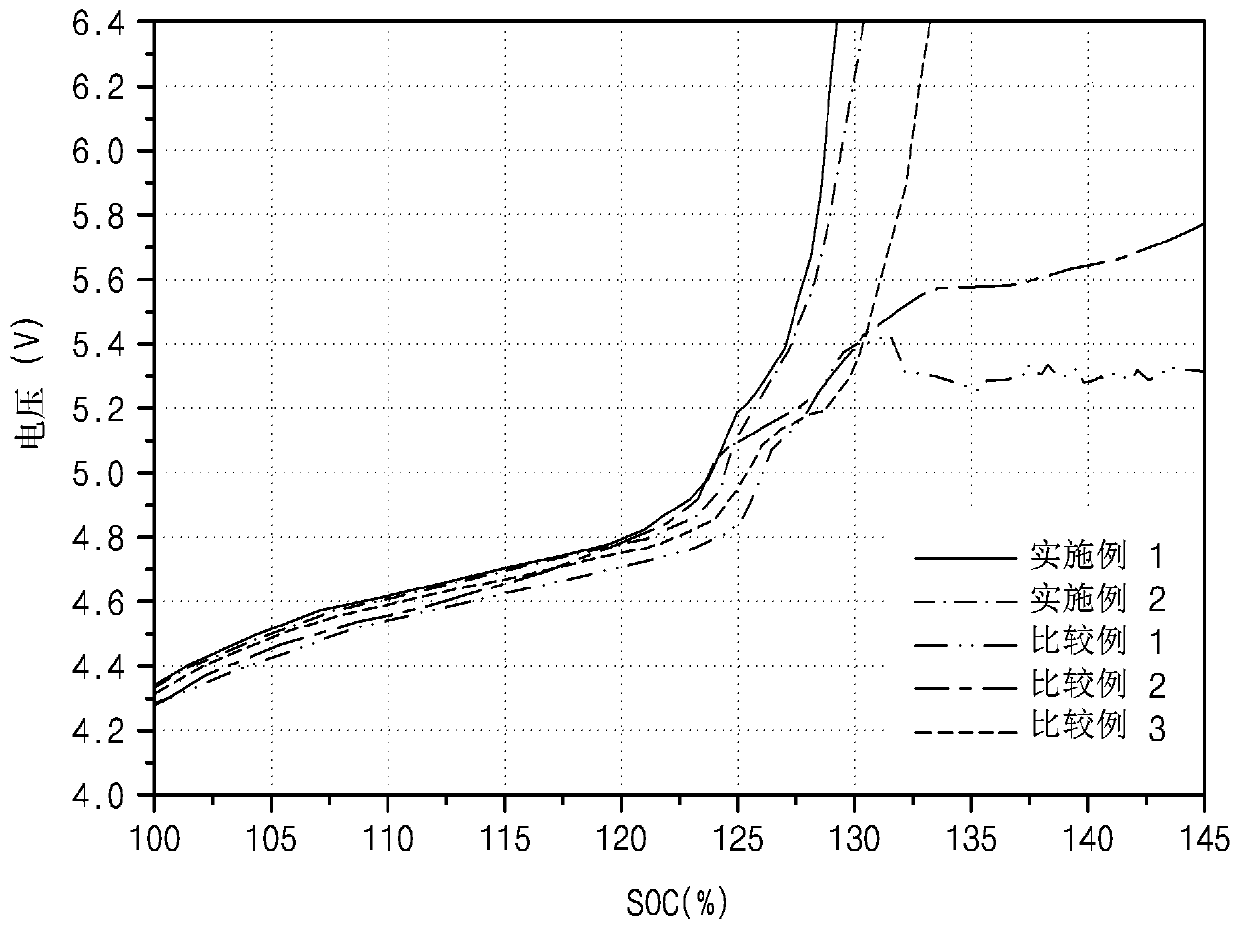Secondary battery cathode and lithium secondary battery comprising same
一种二次电池、正极集电体的技术,应用在二次电池、二次电池维修/保养、电池电极等方向,能够解决无法充分确保电池稳定性等问题,达到改善稳定性的效果
- Summary
- Abstract
- Description
- Claims
- Application Information
AI Technical Summary
Problems solved by technology
Method used
Image
Examples
Embodiment 1
[0092] 50 parts by weight of LiFePO 4 positive electrode active material, 3 parts by weight of carbon black as a conductive agent, 3 parts by weight of polyvinylidene fluoride (PVdF) as a binder, and 44 parts by weight of Li as a gas generating agent 2 CO 3 mixed in N-methylpyrrolidone (NMP) solvent to prepare a first cathode active material slurry.
[0093] Additionally, 94 parts by weight of LiNi 0.6 mn 0.2 co 0.2 o 2 A positive active material, 3 parts by weight of carbon black as a conductive agent, and 3 parts by weight of PVdF as a binder were mixed in an NMP solvent to prepare a second positive active material slurry.
[0094] A 20 μm thick Al foil was coated with the first positive electrode active material slurry prepared above, and then dried to form a 10 μm thick first positive electrode active material layer. Subsequently, the second positive electrode active material slurry was coated on the first positive electrode active material layer, dried, and then rol...
Embodiment 2
[0098] In the same manner as in Example 1, a positive electrode and a lithium secondary battery containing it were prepared, except that 20 parts by weight of LiFePO 4 positive electrode active material, 3 parts by weight of carbon black as a conductive agent, 3 parts by weight of polyvinylidene fluoride (PVdF) as a binder, and 74 parts by weight of Li as a gas generating agent 2 CO 3 To prepare the first cathode active material slurry.
experiment example 1
[0108] Experimental Example 1: Overcharge Test
[0109] The overcharge test was performed by using the secondary batteries prepared in Examples 1 and 2 and Comparative Examples 1 to 3. Specifically, after each secondary battery was charged at 0.3C to the full charge voltage (4.25V) and the charge was cut off at 0.05C, each secondary battery was subjected to a rest time of 3 hours to stabilize the voltage. After the battery voltage was stabilized, each secondary battery was overcharged at 1C to a voltage of 6.4V.
[0110] In this regard, figure 1 is a graph showing overcharge tests of lithium secondary batteries prepared in Examples 1 and 2 and Comparative Examples 1 to 3 of the present invention.
[0111] For the lithium secondary batteries of Examples 1 and 2, it was confirmed that the voltage rapidly increased due to overcharging occurring above 4.8 V, and therefore, it was considered that the overcharging cut-off voltage was reached quickly.
[0112] For Comparative Exam...
PUM
 Login to View More
Login to View More Abstract
Description
Claims
Application Information
 Login to View More
Login to View More - R&D
- Intellectual Property
- Life Sciences
- Materials
- Tech Scout
- Unparalleled Data Quality
- Higher Quality Content
- 60% Fewer Hallucinations
Browse by: Latest US Patents, China's latest patents, Technical Efficacy Thesaurus, Application Domain, Technology Topic, Popular Technical Reports.
© 2025 PatSnap. All rights reserved.Legal|Privacy policy|Modern Slavery Act Transparency Statement|Sitemap|About US| Contact US: help@patsnap.com

